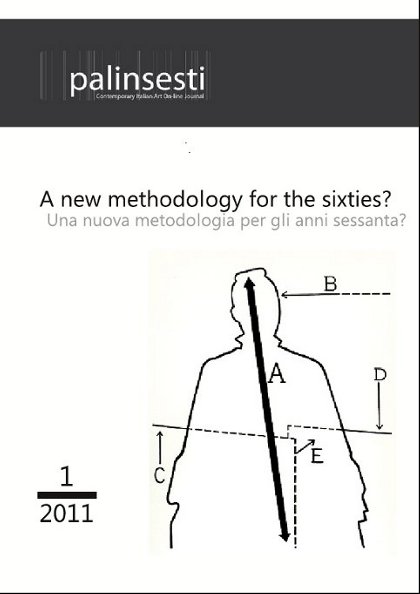Continuous Spaces: Object and Imagination in Superarchitettura
DOI:
https://doi.org/10.15168/palinsesti.1.780Parole chiave:
Storia dell'architettura contemporanea italiana, Architettura radicale, Superstudio, ArchizoomAbstract
This paper examines the relationship between image and space in 1960s Italy as it was rearticulated by the architectural groups Archizoom and Superstudio. Both groups began in Florence in 1966 and jointly organized in that year an exhibition in Pistoia titled “Superarchittetura.“ Their projects remained largely as installation or as image, countering the flood of images in the period of the Economic Miracle in Italy with absurd utopias, verging on the dystopia or hetereotopia. Projects like Superstudio’s The Continuous Monument, or Archizoom’s No-Stop-City, present visions for global cities, at once fanciful and threatening. But such continuous spaces also offer a vision of endless exploration as drift, in the spirit of a Constantian New Babylon.Such spaces, I argue, open up the closed consumer city, in which buildings as monuments are challenged through an extension of principles of modernity, the grid and modular architectural units. The megastructructural environments proposed articulate positions for complex visual and mental constructions and in fact cite the history of ideal perspectival spatial relationships from the Italian Renaissance. The projects and writing of both groups appeared in the Italian architectural magazines Casabella and Domus, thus placing them within a certain Rationalist tradition in Italian urban theory in which the subject of history had been a focus. History of the modern is, I propose, present in the work of Archizoom and Superstudio as memory of the urban realm, and as memory is ambiguous and mixed with fantasy able to destabilize the fetishization of stable visions of architecture as monument. Architecture thus functions here not as iconic and singular object set into the public sphere, but as structure for the experience of space in the social realm.
In this context, these two architectural groups are particularly interesting, because they operate between architecture and idea, so that architecture as a form of theory is given. I bring this proposal into a discussion of spatial theory and argue for a potential understanding of space based on object relations theory (such as in the work of Donald Winnicott) in which objects may act as projective containers for the imaginary. This ties into a general understanding of the art of the sixties in a move away from the autonomous art object and into a wider field of associations, including political and social. While Superstudio and Archizoom engaged with objects, their visual constructions for unrealizable projects played with the imagination and blurred the boundaries between object, physical and mental spaces.
##submission.downloads##
##submission.additionalFiles##
Pubblicato
2011-04-14 — Aggiornato il 2024-04-29
Versioni
- 2024-04-29 (2)
- 2011-04-14 (1)
Fascicolo
Sezione
Casi di studio


